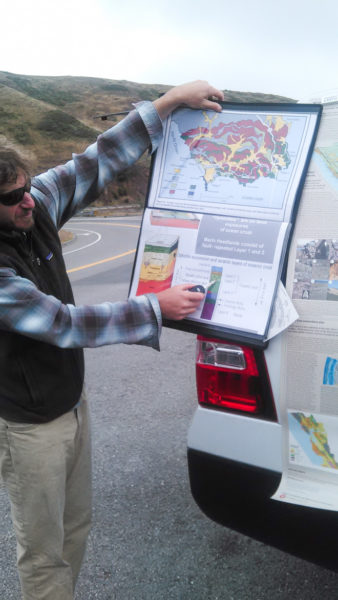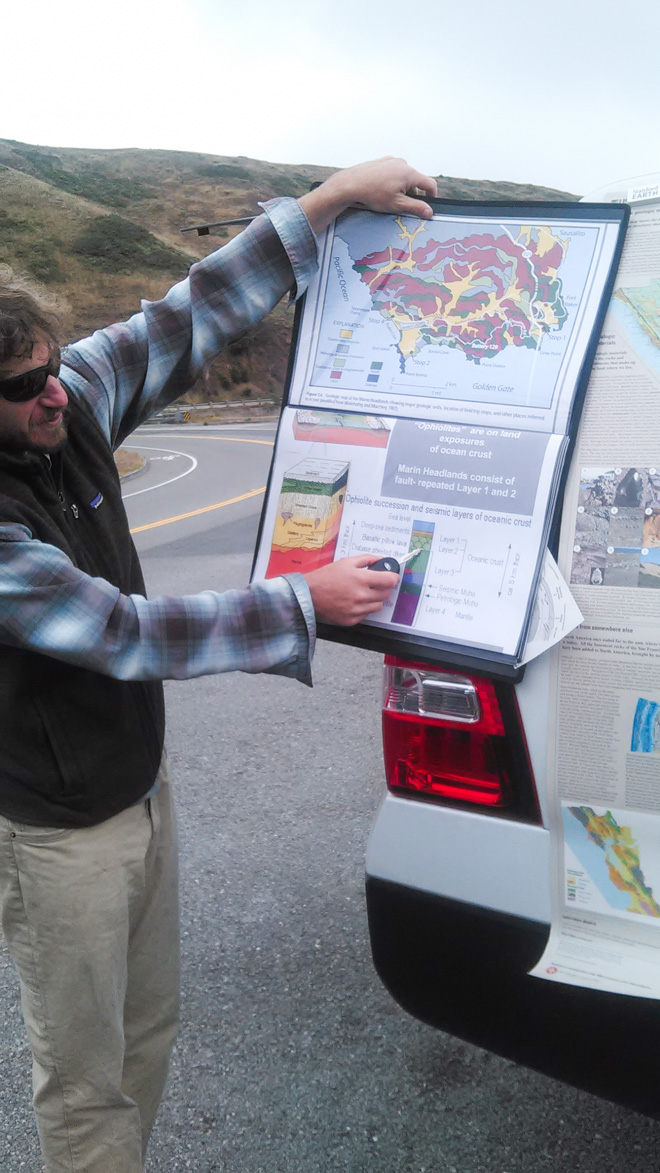Over the weekend of May 21 and 22, the 15 students enrolled in the spring quarter offering of GS 191: “SE3 Field Trips” trekked to Point Reyes National Seashore, where they observed the geology of the California coast and the San Andreas Fault.

The instructors and camping trip destinations vary from quarter to quarter, but the course always includes two lecture classes total followed by a weekend camping trip. Ryan Petterson, field program coordinator in the School of Earth, Energy and Environmental Sciences, and Eric Gottlieb, a geological and environmental sciences Ph.D. student, led the course this spring.
According to Petterson, GS 191 aims to teach students how to understand Californian geography as an observational scientist.
“Everything we do is about the outdoors in some way,” Petterson said.
Activities in this quarter’s trip included various hikes, a campfire complete with s’mores and a visit to a tide pool, where students made observations of sea animals and learned about its formation. According to Ashlynn Black ’19, part of the day’s thrill was watching animals she had never seen before.
GS 191 is currently open to students of all majors and years and has no academic prerequisites. Any geological and observational concepts students should know for the camping trip are taught in the two lecture sessions prior to the weekend off-campus, allowing students with little to no background in geology to participate in the course.
“I signed up for a hands-on learning experience out of the classroom,” said Jessica Eggers ’19. “Being able to see, touch and observe the geological principles we were being taught was super gratifying and helpful.”
Because the destination of the camping trip changes each quarter, students who enjoy the course their first time can repeat the course to explore multiple locations. While this quarter’s trip emphasized the geology of the San Andreas Fault and associated concepts such as plate tectonics, the trip in the winter quarter offering of the course took place in the Sierra Foothills, where students had the opportunity to learn about the cultural and geological aspects of the California Gold Rush. Therefore, students who take the class have the option of enrolling once for a unique, hands-on experience or multiple times to to build up an understanding of California history and geology.
“Geology is something that I was always interested in in high school,” Black said. “This trip allowed me to pursue that interest and gave me a way to connect with nature.”
Petterson hopes that the efforts to make GS 191 and similar field trips available to a wide range of students will allow the field activities program to grow in the years to come. Further, the course’s hands-on activities would not be possible in a traditional classroom setting.
“Experiential learning is the best way to learn that material,” Petterson said. “Getting students out to actually look at the fault is a much easier and more enjoyable way than reading about it in a textbook.”
Students like Elisa Lupin-Jimenez ’18 signed up as a way to escape from the Stanford bubble and appreciate a new experience – she especially valued sitting around the campfire and chatting about life.
According to Black, being surrounded by the great outdoors allowed students to be introspective.
“It was a great time to reflect on the past year that we’ve been here and what we’ve gone through, and to just in general analyze that part of our lives,” Black said.
Contact Erin Perrine at [email protected].
